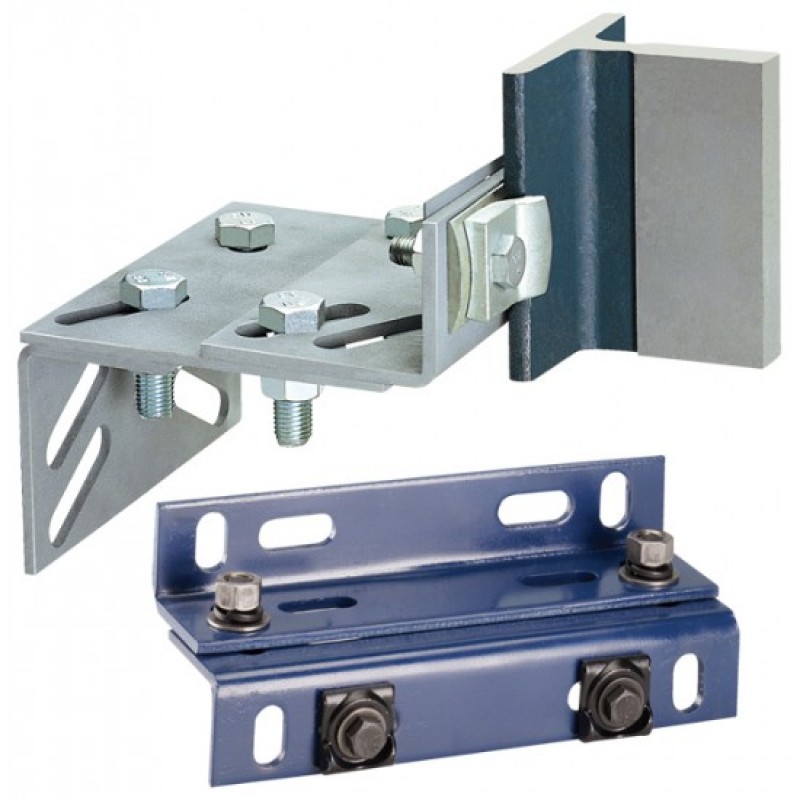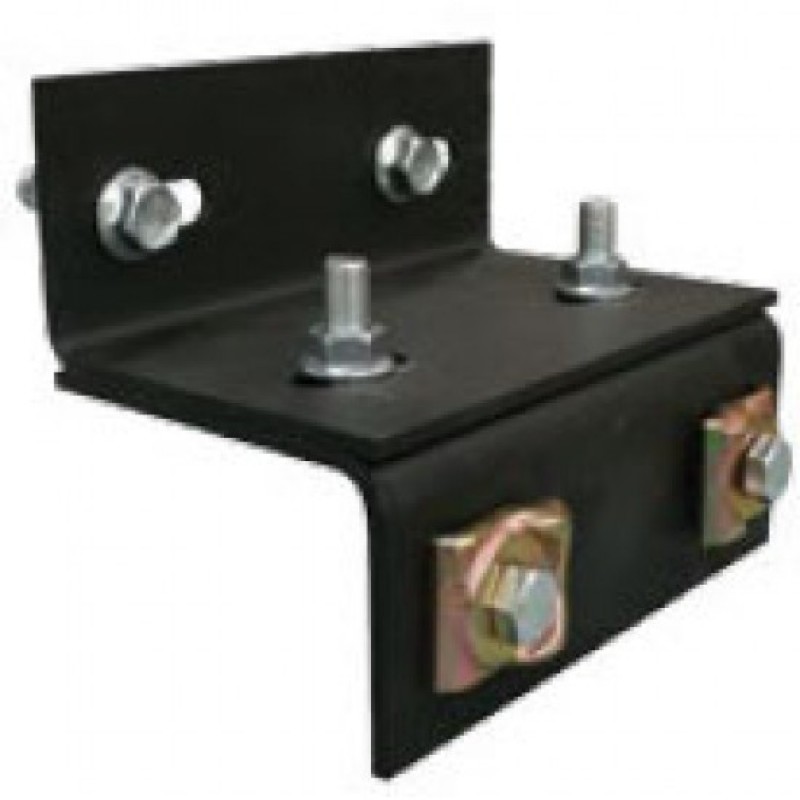
تسجيل الدخول أو إنشاء حساب
Closeالزبون العائد
أنا زبون عائد
تسجيل الدخول أو إنشاء حساب
Closeتسجيل حساب
إذا كان لديك بالفعل حساب معنا ، يرجى تسجيل الدخول على نموذج تسجيل الدخول.
لقد تم انشاء الحساب بنجاح !
شكراً على التسجيل في موقع Egyptlifts!
سيتم إعلامك عن طريق البريد الإلكتروني عندما يتم تفعيل حسابك من قبل فريق عمل الموقع.
إذا كانت لديك استفسارات عن نظام عمل الموقع، يرجى الاتصال بفريق عمل الموقع.
خروج
تم تسجيل خروجك من الحساب. يمكنك مغادرة الموقع بأمان
سلة التسوق الخاصة بك قد تم حفظها، الطلبات الموجودة في السلة سوف يتم استعادتها كلما قمت بتسجيل الدخول إلى حسابك.
كابولى عمود كابينه وثقل الاسانسير

كابولى عمود كابينه وثقل الاسانسير
.jpg)
تعد مجالات التصميم والهندسة المعمارية دائمًا مليئة بالتفاصيل والتقنيات
التي يجب أن نكون على دراية بها لضمان سلامة وكفاءة المباني والمنشآت. ومن بين
العناصر الأساسية التي تلعب دورًا حاسمًا في تلك التصاميم والهندسة هي كابولى عمود
كابينه وثقل الاسانسير.
أهمية كابولى عمود كابينه وثقل الاسانسير في نظام الأسانسير
تعتبر تقنية كابولى عمود كابينه وثقل الاسانسير أمورًا حيوية في عالم أنظمة مصاعد حديثة. إذا كنتم تتساءلون عن سبب أهميتهما، فلنبدأ بالنظر في عملية رفع وخفض اسانسير. يعتمد كفاءة هذه العملية بشكل كبير على دقة حساب الثقل والتصميم السليم لكابولي عمود الكابينة. إذا تم تقدير الثقل بشكل غير صحيح أو لم يتم تصميم الكابولي بشكل كافٍ لتحمل هذا الثقل، فإن ذلك يمكن أن يؤدي إلى مشكلات تشغيلية خطيرة وحوادث قد تكون مدمرة. (كبائن اسانسيرات)
بالإضافة إلى ذلك، يؤثر تحسين كابولى عمود كابينه وثقل مصعد بشكل صحيح على استهلاك الطاقة وكفاءة الأسانسير بشكل عام. إن استخدام تصاميم دقيقة ومحسَّنة يمكن أن يقلل من الطاقة المستهلكة أثناء رفع وخفض الكابينة، مما يساهم في تحقيق التوازن بين الأداء العالي والاستدامة البيئية. (كيف يمكنني استخدام أسانسير داخلي)
باختصار، كابولي عمود الكابينة وثقل الاسناسير ليسا مجرد تفاصيل تقنية، بل هما أساسيات تؤثر بشكل كبير على سلامتنا وراحتنا أثناء استخدام أنظمة الاسانسير اليومية. (كيفية اختيار أفضل المصعد الكهربائي للشراء)
هيكل ووظيفة كابولى عمود كابينه وثقل الاسانسير
كابولي عمود الكابينة وثقل الأسانسير هما جزءان أساسيان من نظام المصعد، ويعملان بتنسيق تام لضمان أداءه الآمن والفعال. يتكون كابولي عمود الكابينة من هيكل عمودي قوي يتم تركيبه داخل البئر الأسانسيري. يتمثل الهدف الرئيسي لهذا الهيكل في دعم وتحمل وزن الكابينة والركاب أثناء عملية الرفع والخفض. (كيفية فك شفرة أسانسير- طريقة عمل شفرة أسانسير)
تلعب وظيفة كابولي عمود الكابينة دورًا حيويًا في ضمان سلامة الأسانسير، حيث يجب أن يكون الهيكل مصممًا بعناية لتحمل الضغط والقوى التي تتعرض لها الكابينة أثناء التشغيل. إلى جانب الهيكل العمودي، يشمل كابولي عمود الكابينة مجموعة من الأسلاك والحبال والمكونات الميكانيكية الأخرى التي تعمل بالتنسيق مع نظام الأسانسير بأكمله. (ما هو أرخص مصعد كهربائي في مصر)
أما ثقل الأسانسير، فهو عبارة عن مجموع الأحمال التي تتكون من وزن الكابينة نفسها وأي ركاب أو أغراض تنقل داخلها. يجب أن يتم حساب هذا الثقل بدقة لضمان أن الكابولي ومكونات الأسانسير الأخرى مصممة بشكل صحيح للتعامل مع الحمولة المحددة. تحقق هذه العملية من أن الأسانسير يعمل بأمان وفعالية، وتجنب الحوادث المحتملة التي يمكن أن تنجم عن استخدام غير صحيح للنظام. (ما هو انفرتر مصاعد وأهم فوائده)
باختصار، كابولى عمود كابينه وثقل الاسانسير هما عناصر أساسية في نظام الأسانسير تعمل معًا لضمان سلامة وأداء هذه التقنية الحضرية الحديثة. (ماكينة ايطالي جيد)
أثر ثقل الأسانسير على تصميم الكابولي
تأثير ثقل الأسانسير على تصميم كابولي عمود الكابينة يعتبر أمرًا حاسمًا في مجال هندسة الأسانسير. إن فهم كيفية تأثير الحمولة على هيكل الكابولي هو جوهري لتصميم نظام أسانسير آمن وفعال. (مصاعد مستعملة للبيع في مصر)
عندما يتم تحميل الأسانسير بأوزان مختلفة من الركاب والأشياء، يجب أن يتم
توزيع هذا الثقل بالتساوي على كابولي عمود الكابينة. إذا لم يتم ذلك بشكل صحيح،
فإن ذلك يمكن أن يؤدي إلى تواجه التصميم تحديات خطيرة. (كابولى عمود كابينه وثقل
الاسانسير)
على سبيل المثال، إذا كان تصميم الكابولي غير متساوٍ أو لم يتم تقدير الثقل بدقة، فإنه يمكن أن يؤدي إلى التوترات والضغوط الزائدة على المكونات الهيكلية للكابولي. هذا يمكن أن يتسبب في التآكل والتلف المبكر ويزيد من تكاليف الصيانة. (مصاعد هاي ليفت- اسعار مصاعد كهربائية في مصر)
علاوة على ذلك، يتعين أيضًا مراعاة ثقل الأسانسير عند تصميم مكونات
الكابولي الأخرى مثل الكبالات والبكرات والأسلاك. يجب أن تكون هذه المكونات قوية
بما يكفي لتحمل الحمولات المختلفة بأمان. (كابولى عمود كابينه
وثقل الاسانسير)
باختصار، تأثير ثقل الأسانسير على تصميم كابولي عمود الكابينة يظهر كحجر الزاوية في ضمان أداء الأسانسير بشكل سليم وآمن، ويتطلب تفهم دقيق للأحمال المختلفة التي يمكن أن تؤثر على هذا التصميم. (أخر أسعار أسانسير هيدروليك)
الحمولة المصممة وثقل الأسانسير
الحمولة المصممة وثقل الأسانسير هما مفاهيم مرتبطة ارتباطًا وثيقًا في نظام
الأسانسير. الحمولة المصممة تشير إلى الحد الأقصى للوزن الذي يمكن للأسانسير نقله
بأمان وفقًا لتصميمه ومواصفاته. يتم تحديد الحمولة المصممة خلال مرحلة تصميم
الأسانسير ويجب أن تتناسب مع استخدام محدد للأسانسير، سواء كان ذلك للركاب أو لنقل
البضائع. (كابولى عمود
كابينه وثقل الاسانسير)
ثقل الأسانسير، بالمقابل، يمثل الوزن الفعلي للأشخاص أو الأشياء داخل الكابينة في وقت معين. وفي العمليات اليومية، يمكن أن يتغير ثقل الأسانسير باختلاف عدد الركاب والأشياء التي يتم نقلها. (أسانسيرات- أسانسير- مصعد- مصاعد)
من الضروري أن تتماشى الحمولة المصممة مع ثقل الأسانسير بحيث لا تتجاوز
الحمولة المصممة الثقل الفعلي الذي يمكن للأسانسير تحمله. إذا تم تجاوز الحمولة
المصممة بشكل مستمر، فإن ذلك يمكن أن يؤدي إلى تآكل مبكر للمكونات الهيكلية
للأسانسير وزيادة خطر الحوادث. (كابولى عمود
كابينه وثقل الاسانسير)
بالملخص، الحمولة المصممة تمثل الحد الأقصى للحمل الذي تم تصميم الأسانسير لتحمله، في حين أن ثقل الأسانسير يمثل الوزن الفعلي للركاب والأشياء في الكابينة. توازن بين هاتين القيمتين يكمن في ضمان سلامة وكفاءة نظام الأسانسير. (أسعار الأسانسير في مصر)
تكنولوجيا كابولى عمود كابينه وثقل الاسانسير
تكنولوجيا كابولى عمود كابينه وثقل الاسانسير هي جزء حاسم من تصميم وأداء أنظمة الأسانسير الحديثة. تقدم التكنولوجيا في هذا المجال حلاً مبتكرًا لتحسين الأمان والكفاءة في تشغيل الأسانسيرات. (أسعار المصاعد الهيدروليك في مصر)
فيما يتعلق بكابولي عمود الكابينة، فإن تقنيات التصميم والمواد المستخدمة
تساعد في تحقيق هياكل أكثر متانة وقوة. يتم تصنيع الكابولي باستخدام مواد عالية
الجودة وتقنيات تصنيع متقدمة لضمان قدرته على تحمل الأحمال المختلفة بأمان.
بالإضافة إلى ذلك، تقنيات التصميم الهندسي تسمح بتوجيه القوى والضغوط بشكل مثلى
لضمان استقرار وسلامة الكابولي.
أما فيما يتعلق بثقل الأسانسير، فتوفر التكنولوجيا حلاً لرصد الحمل بدقة
وتقديم معلومات دقيقة لنظام التحكم. يتم استخدام أجهزة استشعار حديثة لقياس الثقل
ومراقبته بشكل مستمر. هذا يسمح للنظام بضبط عمليات رفع وخفض الأسانسير بدقة وفقًا
للحمل الفعلي، مما يقلل من الاستهلاك الزائد للطاقة ويحسن الكفاءة العامة للنظام.
بالمجمل، تقنيات كابولى عمود كابينه وثقل الاسانسير تجسد التقدم التكنولوجي
المستمر في مجال الأسانسيرات، مما يعزز من سلامة وأداء هذه الأنظمة ويوفر تجربة
أفضل للمستخدمين.
العوامل المؤثرة على كابولى عمود كابينه وثقل الاسانسير
تعد العوامل المؤثرة على كابولى عمود كابينه وثقل الاسانسير أمورًا حاسمة
لتصميم وأداء الأسانسيرات بشكل فعّال. من بين هذه العوامل:
·
الحمل
المتغير: يعتبر التغير في الحمولة داخل الكابينة واحدة من أهم العوامل المؤثرة.
عندما يتغير عدد الركاب أو كمية البضائع داخل الأسانسير، يجب على كابولي عمود
الكابينة ومكونات الأسانسير الأخرى التكيف مع هذه الاختلافات بكفاءة.
·
تصميم
الكابينة: تأثير تصميم الكابينة يكمن في توجيه الحمل بشكل صحيح وتقليل التأرجح
أثناء عملية الرفع والخفض. تصميم الكابينة يجب أن يتوافق مع الحمولة المصممة بحيث
لا تتعرض لأي ضغوط زائدة أو اهتزازات خطرة.
·
استخدام
الأسانسير: الاستخدام الشديد والتكراري للأسانسير يمكن أن يؤثر على كابولي عمود
الكابينة ومكونات الأسانسير بشكل كبير. لذا، يجب مراعاة نمط الاستخدام المتوقع عند
تصميم الأسانسير.
·
الظروف
المحيطة: العوامل البيئية مثل درجات الحرارة المتغيرة والرطوبة يمكن أن تؤثر على
أداء مواد الكابولي وتجعلها تحتاج إلى صيانة إضافية.
·
متطلبات
السلامة واللوائح: يجب أن يتم تصميم كابولي عمود الكابينة والأسانسير بمراعاة
اللوائح ومعايير السلامة المحددة من قبل السلطات المحلية والدولية.
·
تقنيات التحكم
والرصد: استخدام تقنيات التحكم الحديثة وأنظمة الرصد يمكن أن يساعد في مراقبة
وإدارة الحمل بشكل دقيق، مما يحسن من أداء الأسانسير ويحمي هياكل الكابولي. (كابولى عمود كابينه
وثقل الاسانسير)
باختصار، العوامل المذكورة أعلاه تلعب دورًا حيويًا في تأثير كفاءة وسلامة
كابولي عمود الكابينة وثقل الأسانسير، ويجب مراعاتها بعناية خلال تصميم وصيانة هذه
الأنظمة المهمة.
تحسين كفاءة الأسانسير وتقليل الأعباء على الكابولي
تحسين كفاءة الأسانسير وتقليل الأعباء على كابولي عمود الكابينة هما أهداف
رئيسية لصناعة الأسانسيرات الحديثة. من خلال التقنيات والتطورات الهندسية، تم
تحقيق تقدم كبير في هذا الصدد.
أحد الطرق التي تم تطبيقها لتحسين كفاءة الأسانسير هو استخدام تقنيات
متقدمة في محركات الأسانسير. تم تطوير محركات أكثر كفاءة من حيث استهلاك الطاقة،
مما يساهم في تقليل تكلفة التشغيل على المدى الطويل وتقليل الأعباء على الكابولي. (كابولى عمود كابينه
وثقل الاسانسير)
بالإضافة إلى ذلك، تم تطوير نظم التحكم الذكية التي تتيح للأسانسيرات
استجابة أفضل للاحتياجات. على سبيل المثال، يمكن لهذه النظم تحديد الأوقات الفعالة
لتشغيل الأسانسيرات وتوجيه الكابينات بفعالية لتجنب الازدحام وتقليل وقت الانتظار
للركاب.
تقنيات التوجيه المتقدمة هي أخرى تساهم في تقليل الأعباء على كابولي عمود
الكابينة. تمكن هذه التقنيات الأسانسيرات من الانتقال بسلاسة بين الطوابق وتوزيع
الحمل بشكل أفضل على مكونات الكابولي، مما يقلل من التوتر والاهتزازات ويزيد من
عمر الخدمة.
باستخدام هذه التقنيات والممارسات المتقدمة، يمكن تحسين كفاءة الأسانسير
وتقليل الأعباء على كابولي عمود الكابينة بشكل كبير، مما يسهم في توفير تجربة أفضل
للركاب وتحقيق أداء أكثر اقتصادية لهذه الأنظمة الهامة في المباني الحديثة.
مستقبل تطور كابولى عمود كابينه وثقل الاسانسير
مستقبل تطور كابولى عمود كابينه وثقل الاسانسير يبدو مثيرًا للاهتمام
ومليئًا بالفرص للابتكار والتحسين. مع تقدم التكنولوجيا والاهتمام المتزايد
بالاستدامة والأمان، هناك عدة اتجاهات محتملة قد تشهدها هذه الصناعة في المستقبل:
·
زيادة الأمان:
سيتم التركيز أكثر فأكثر على تطوير تقنيات متقدمة لضمان سلامة الأسانسيرات. قد
تشمل ذلك تحسين نظم الكشف عن الأعطال والتحكم الذكي لتجنب الحوادث وزيادة مستوى
الأمان.
·
كابولي كابينة 9 ملم سمك 4 ملم
$23.00
كابولي كابينة 9 ملم سمك 4 ملم يبدو أنك تشير إلى لوحة "كابولي" بسمك 9 ملم وأبعاد 4 ملم لاستخدامها في كابينة المصعد. يمكنك العثور على هذه الألواح المصنوعة من مواد مختلفة مثل الصاج المجلفن أو الألمنيوم أو الفولاذ المقاوم للصدأ وغيرها. يتم استخدام م..
كابولي كابينة 9 مم
$19.00
كابولي كابينة 9 مم إذا كنت بحاجة إلى لوحة "كابولي" بسمك 9 ملم لاستخدامها في كابينة المصعد، يمكنك متابعة الخطوات التي ذكرتها في الإجابة السابقة للعثور على موردين يوفرون هذه اللوحات بالمواصفات التي تحتاجها. تأكد من التحقق من جودة المواد المس..


